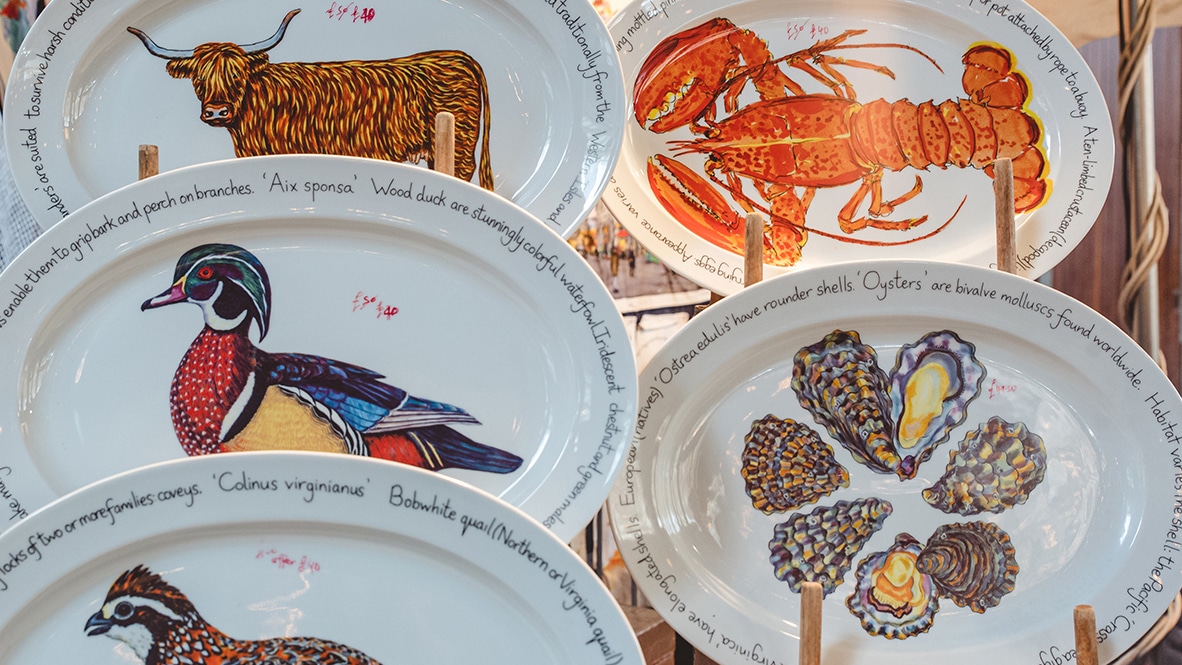Q&A: Elliot Hashtroudi
The head chef of Camille on regional French cuisine, British seafood, and the unlikely appeal of grilled cow’s udder
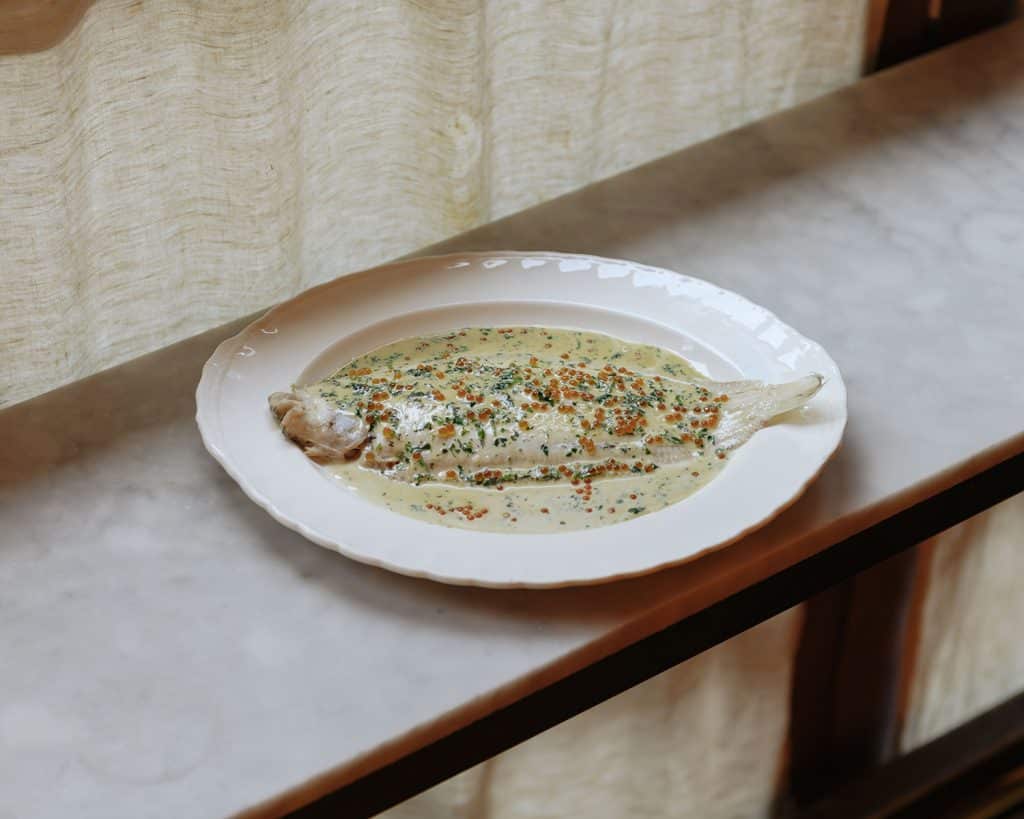

“IF I CAN OPEN ONE PERSON’S EYES TO OFFAL, MAYBE THEY’LL DECIDE NOT TO JUST BUY THAT PACK OF SUPERMARKET MINCE”
Interview: Mark Riddaway
Elliot Hashtroudi never had the slightest intention of being a chef. Growing up in Devon, he watched his father struggle in the restaurant industry and vowed never to follow in his footsteps. “I was like, right, I never want to do that,” he recalls. “I’ve seen my dad working every hour of the day and night, for nothing.”
After moving to London, gaining an English degree and starting a disappointing career in the film industry, Elliot found himself bored and unfulfilled – until his girlfriend persuaded him to give cooking a go. “So, I blagged my way into a restaurant,” he says. “From there, I got the passion for it.” Following formative spells in Mayfair and at Borough’s Padella restaurant, he really honed his craft at the legendary St John in Farringdon. Deciding to strike out alone, he would go on to man the stove at several acclaimed pop-ups, including a residency at 107 (formerly P Franco), before an approach by Clare Lattin and Tom Hill, the duo behind Ducksoup in Soho, led to him taking the helm of their latest venture. Camille, a regional French restaurant, opened at Borough Market last year to ecstatic reviews, completely validating Elliot’s about-turn. “Let’s put it this way,” he says, “I’m glad film didn’t work out!”
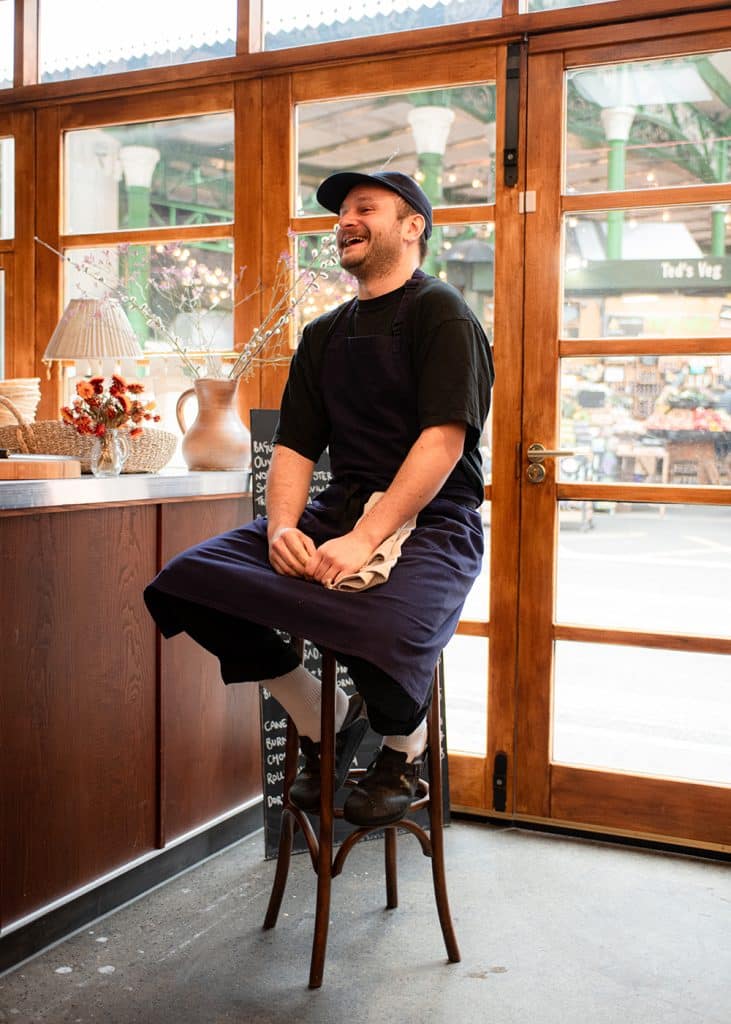
What is it about cooking that sparks your passions?
It’s the creativity. It’s being able to express yourself on a plate. It’s knowing that every single plate matters, that it’s your baby and you want it to be perfect. Having my own restaurant now, it feels like it’s part of me. It’s like people coming to my house. I grew up in a family where you sat at the dinner table, spending hours eating dinner, sharing stories. For me, that’s really important. I think it’s in my nature to really look after people. I would never change it for anything.
You’re one of a long rollcall of head chefs who’ve graduated from the kitchens of St John. What is it about that place that makes it such a conveyor belt for talent?
It’s almost like a finishing school in a way. You get a great understanding of how to look after your ingredients. You get knowledge of butchery, knowledge of provenance. And they really put their trust in you. In so many kitchens, the chef will just do one thing all the time. They might do the peas for a garnish for six hours a day, then come in tomorrow and do peas for another six hours. But at St John, you’re cooking a whole fish, you’re cooking game, loads of side dishes and starters. You’re managing loads of different ingredients and different pans, and it’s really fight or flight. I think some chefs engage their brain and get on with it, and others are a bit overwhelmed. For some it works, for some it really doesn’t.
When Clare and Tom first approached you about Camille, what was their pitch?
I was coming to the end of my residency at 107 and I’d organised a few pop-ups in New York and elsewhere. Clare and Tom contacted me and said: “We’re opening a restaurant, we’ve seen what you’ve been cooking, we’d love to meet you.” We had a nice little chat. They told me that they’d fallen in love with some old Pierre Koffmann books and wanted to create a French bistro, taking the name from his grandma, Camille. Then I pitched them my idea: French regional cooking, whole carcass, regenerative farms, 90 to 100 per cent British ingredients, but cooking it in a French way, really expressing the little niches and intricacies of France rather than focusing on Lyon like a lot of great restaurants do. And they were instantly like: “Love that. See you next month. Let’s open a restaurant.”
As a Londoner who was raised in Dorset, how did you come to have such a feel for the regional foods of France?
So, I spent a lot of my youth in France. My auntie has lived there for over 60 years. She’s quite a character. I spent a lot of time with her in the south of France. That sounds quite romantic and it really wasn’t – she didn’t live in the nicest area – but through her I got this love for the country. I loved the relationships people had with their bakeries, their markets. There were no big chain supermarkets, it was just produce grown in that region. Since then, I’ve visited so many times, different areas, different places. It’s the food that I want to eat, and that’s why I love cooking it.
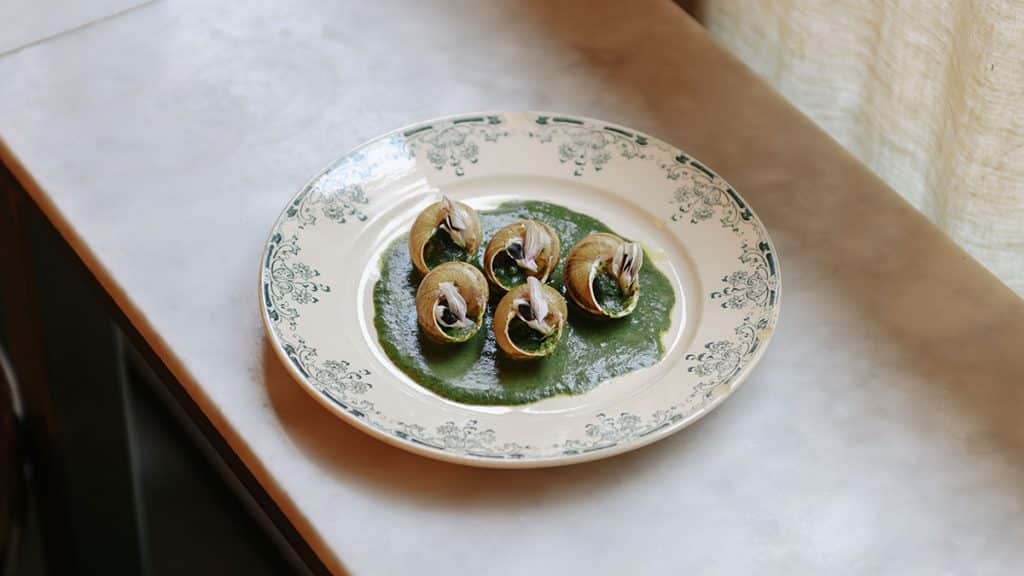
You mentioned your commitment to whole-carcass butchery. How does that work?
I work closely with three or four different farmers, all regenerative farmers, all sustainable, which is the main thing – I hate that there’s so much emphasis on breeding as much as you can for as much profit as possible and destroying the land. Every week we get a whole pig in. Sometimes we get whole cows, goats, lambs. That leads to a real game of creativity, because our menu changes every day. Nothing goes to waste. We use all the skin – we confit it, we crisp it, we use it in cassoulet. All the fat gets rendered. All the bones are used for stock. Other bits go into terrines, all the offal goes into various dishes. Working with all those bits is like this beautiful mosaic. From a cost perspective it’s amazing, and from an environmental perspective, again, it’s so important.
Do you think chefs have an important role to play in showing the potential of lesser-used cuts?
I do. If I can open one person’s eyes to offal or to the experience of whole-carcass butchery, maybe they’ll go home and think, I’m not just going to buy that pack of mince from the supermarket that’s been sat there for a week, I’m going to go to my butchers and ask them for a little bit of heart or kidney. It’s great for your diet and it’s also great for saving money, but it’s overlooked so much in this country.
Are there any cuts that you struggle to shift?
Not really. Do you know what, we even serve cow’s udder, which really is a bit niche. I was sceptical the first time about how this was going to go down, but by the time dinner had come round, it had sold out! An udder takes a lot of trimming and a lot of cleaning. We grill it so it absorbs all that smoky aroma, and we serve it with like a nice sharp salad to cut through the fat. It’s delicious. Honestly, I absolutely love it and I’m so glad the customers do as well!
Explore Elliot’s recipes
Presumably your approach to fish is similarly exacting.
Me and my sous chef both grew up on the coast, so we were always by the beach, surrounded by the beauty of the British sea. Given how little fish most people include in their diet, I think you can sometimes forget that Britain is an island. We work directly with small fishmongers and, again, we use every element, from the head to the liver to the trim. But the main thing with fish is only buying what’s in season in this country. It’s really important that people understand how fish works, that lots of species shouldn’t be available all year round – in the same way that I’m never going to be serving strawberries in December.
With that commitment to seasonality, how do you cope at times of the year when you don’t have an abundance of ingredients?
I almost enjoy those times more. I like the challenge. It’s like those strawberries – we’re not going to have much fresh fruit in December, but that’s no problem. We’re not going to buy it in. Partly, it’s important to think ahead. Right now, we’re preserving a lot of summer fruit and veg by pickling, by fermenting. A lot of meat we cure. Some fish we cure as well. Your great-grandparents, your grandparents, they used all these techniques of pickling, preserving, curing, so that produce would last all year round. Also, there’s some beautiful stuff that comes through in December from England and there’s just no need to shop around. You make your menu a little bit smaller, you make it a little bit more exciting, and you do a few things differently, but every season should speak for itself really.
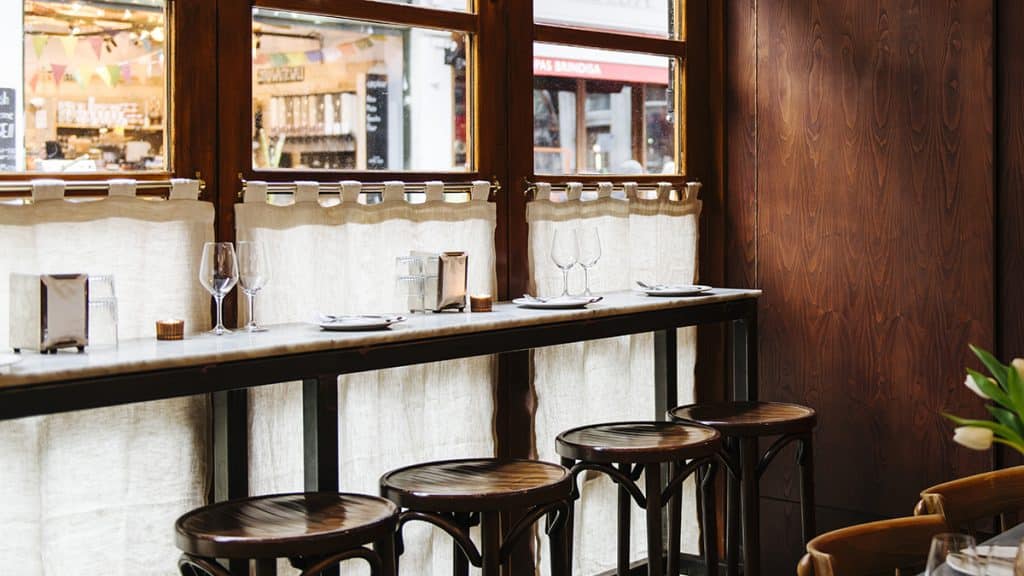
How do you find working on the edge of a busy produce market?
It’s great. I’ve come a full circle in a way. Working here at Padella years ago, I fell in love with Borough Market – so many great stalls, so many great restaurants. It’s had a bit of a renaissance recently with how many amazing restaurants have cropped up. And going into the actual market and seeing the produce is fantastic, particularly the stalls that highlight sustainable British produce. There’s such a nice buzz around Borough Market. You’ve got a lot of out-of-towners coming in, but you’ve also got a lot of real Londoners who grew up with the market, who’ve seen it evolve and they keep coming back to it. It’s the heart of London. It really is a magical place.


